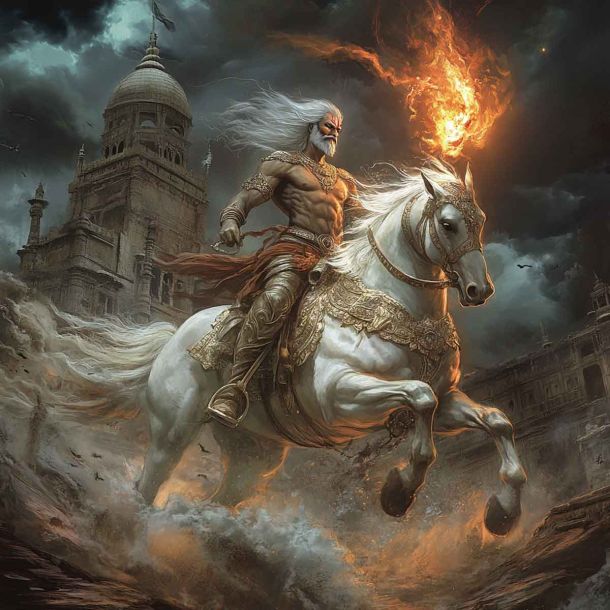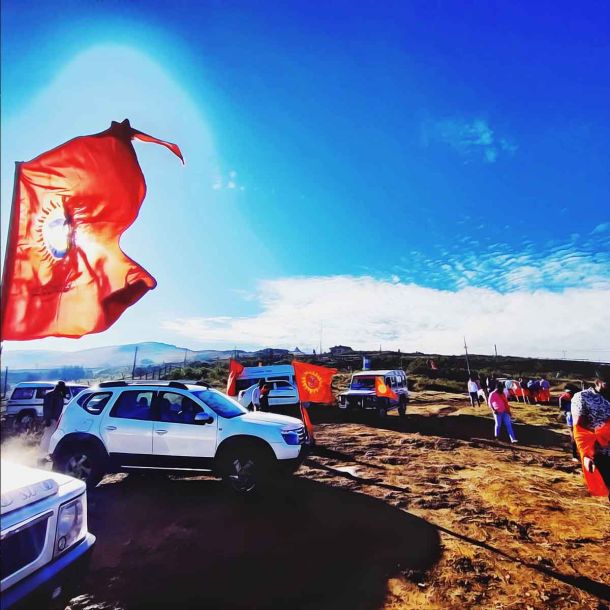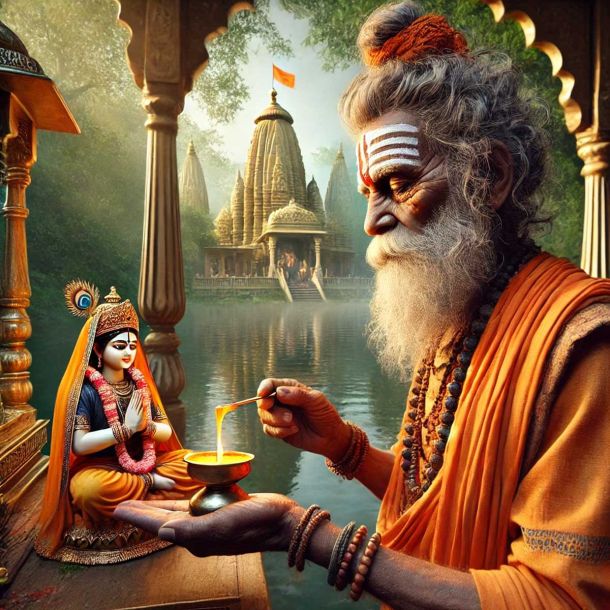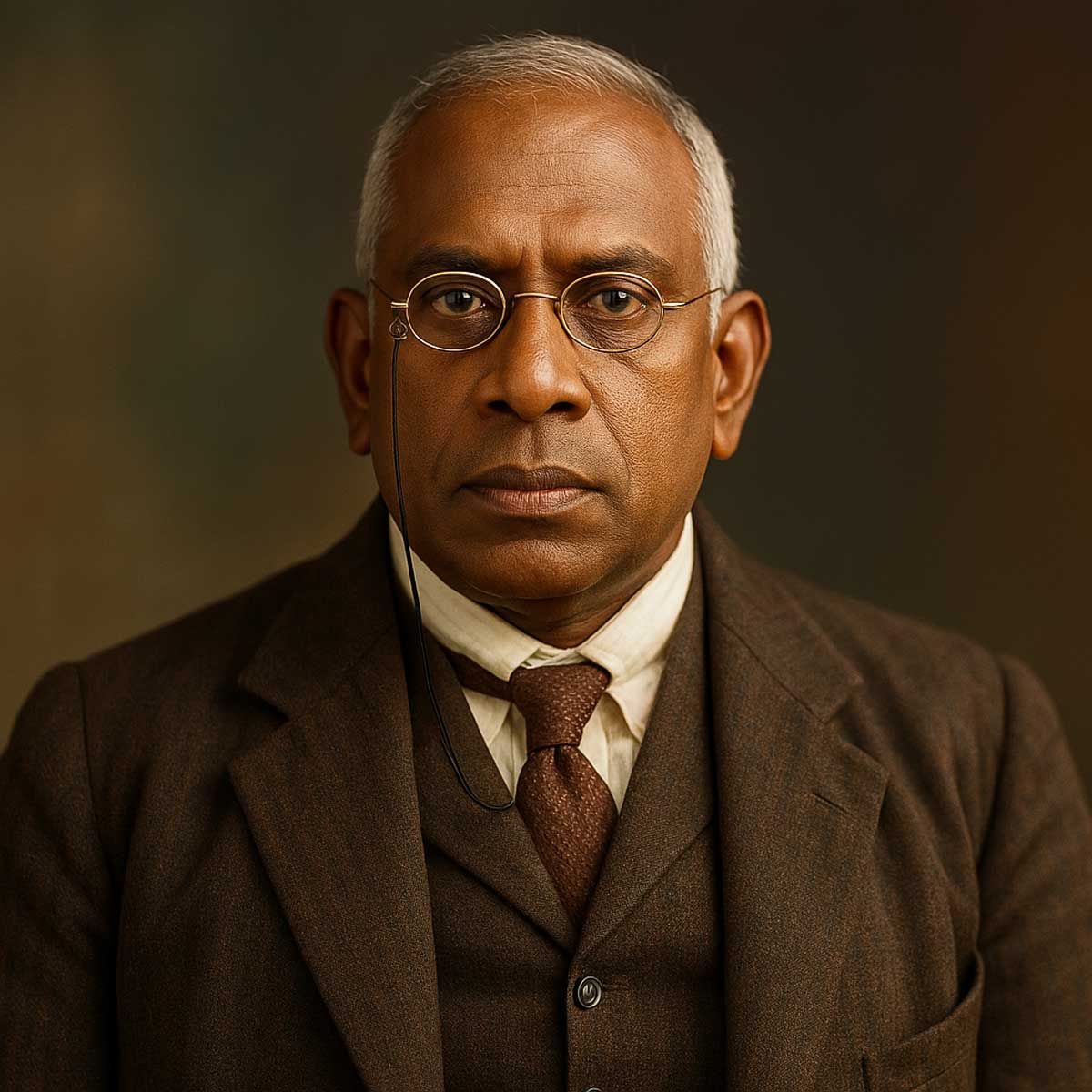More Coverage
Twitter Coverage
Satyaagrah
Written on
Satyaagrah
Written on
Satyaagrah
Written on
Satyaagrah
Written on
Satyaagrah
Written on
Join Satyaagrah Social Media
“Mostly unknown but the greatest Indian Revolutionary”: Rash Behari Bose, Neta of Netaji Subhash Chnadra Bose, most progressive revolutionary who prepared all the field and ammunition for Bose to carry out the biggest revolution against Britishers
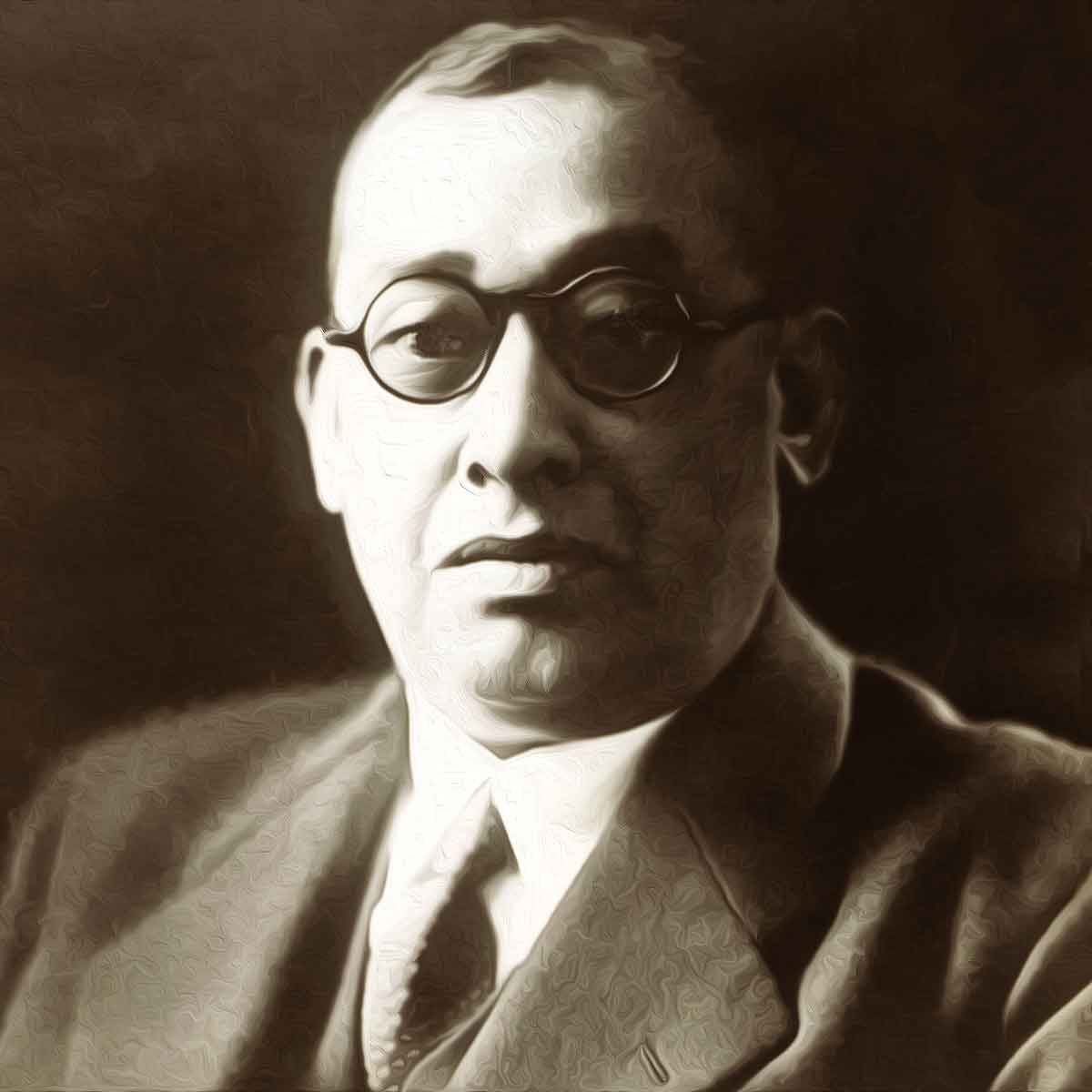
Perhaps of the best chief and draftsmen of India's progressive revolution, Rash Behari Bose assumed a most powerful and dynamic part in the accomplishment of Independence in India in 1947. On the off chance that Aurobindo Ghose is viewed as the Mazzini of Young India, Rash Behari Bose might be fitly called the Cavour of India's Freedom Movement.
Rash Behari Bose assumed a vital part in the Ghadar Revolution, an arrangement to go after the British armed force from within. Rash Behari Bose was the initial architect of the Indian National Army (Azad Hind Fauz) that Subhash Chandra Bose exploited later.
These days, we're actually suffering to present Netaji Subhash Chandra Bose his due weightage in Indian freedom conflict records. It's far an open secret in the end that Netaji’s single hit with the patriotic Azad Hind Fauz had completed greater damage to the British established order than the infinite Ahimsa andolans which were prepared with the aid of the Indian National Congress under Gandhi. The ultimate nail inside the coffin was the Navy Mutiny of 1946, following which the incumbent British government sooner or later determined to “quit India” (Gandhiji’s Quit India had fizzled out by then).
PV Chuckraborty, former Chief Justice of Calcutta High Court, on March 30, 1976, had written: "When I was acting as Governor of West Bengal in 1956, Lord Clement Attlee, who as the British Prime Minister in post-war years was responsible for India’s freedom, visited India and stayed in Raj Bhavan Calcutta for two days, I put it straight to him like this: ‘The Quit India movement of Gandhi practically died out long before 1947 and there was nothing in the Indian situation at that time, which made it necessary for the British to leave India in a hurry. Why then did they do so?’ In reply, Attlee cited several reasons, the most important of which were the INA activities of Netaji Subhas Chandra Bose, which weakened the very foundation of the British Empire in India, and the RIN Mutiny which made the British realize that the Indian armed forces could no longer be trusted to prop up the British. When asked about the extent to which the British decision to quit India was influenced by Mahatma Gandhi’s 1942 movement, Attlee’s lips widened in a smile of disdain and he uttered, slowly, ‘Minimal’."
Not many, however, realize that the Indian National Army (INA) emerged from the Indian Independence League which was founded by Rash Behari Bose, who has been subjected to a gigantic amount of neglect by leftist historians. But this is the handiest anticipated withinside the contemporary context. We are actually wrestling to even convey Netaji (whose recognition and mass enchantment in the late 1930s become at the least akin to Gandhiji’s) to the limelight, so it's miles very natural that other martyrs like Rash Behari Bose, Kartar Singh, Bagha Jatin (who did not keep any public existence because of the character of their works) haven’t been given a great deal space in the history books until now. Hence, Rash Behari has remained an unheard, unsung hero in the Indian independence movement. Whatever little flashes of indistinct reminiscence get brought about in the minds of maximum readers on listening to the call of Rash Behari Bose are in most cases the ones in reference to INA. But the INA episode becomes actually “the closing and the best” of Rash Behari Bose. He had deliberated a similarly large revolution in the course of the First World War phase, that's referred to as the “Hindu-German Conspiracy”. He aimed to ignite an armed revolution in the British Indian navy and combat incumbent British with overseas assistance as a part of this conspiracy. The plan failed, but it's miles no lesser a wonderful bankruptcy of Indian freedom motion than the failed “Noncooperation” or failed ”Civil Disobedience” movements.
From the time that Rash Behari entered the arena till death intervened, he was not only thinking but dangerously acting for the freedom of the Motherland. The motto of his life was summed up in the following few words:
“Independence India must have because her independence is essential for the regeneration of the whole world. It is not the end in itself, but it is a means to an end and that end is the destruction of Imperialism and Militarism and the creation of a better world for all to live in.”
Early Life of Rash Behari Bose
The title appears to be somewhat confusing but it is a fact, stranger than fiction. He had the most important inning of an active, bold, and impetuous revolutionary.
Born in Chandan Nagar, a small French pocket close to Kolkata, it becomes a congenial floor for the boom of the revolutionary movement and is proud of producing Kanailal Datta and Rash Behari Bose.
The ethical and highbrow heritage got here from Motilal Roy, the editor of Prabartak, who stimulated many a youngster. Rash Behari Bose was born on May 25, 1886, in the village Subaldaha, Bardhaman district, in the province of Bengal. His mom passed away in 1889 while Rash Behari was nonetheless a baby. He was introduced thereafter via way of means of his maternal aunt Vama Sundari.
Rash Behari Bose started his education at Subaldaha under the supervision of his grandfather, Kalicharan, and later in Dupleix College at Chandernagore. At the time Chandernagore was under French rule thus, and Rash Behari was encouraged by each British and French culture. The French Revolution of 1789 had a deep effect on Rash Behari. Rash Behari Bose was now no longer a totally attentive student. He becomes a daydreamer, his thoughts preoccupied with revolutionary ideas. He becomes greater inquisitive about his bodily prowess than his studies.
Never a "good'' boy in the conventional sense of the term, Rash Behari in his boyhood showed in his character signs of turbulence and refused to bend his neck to authority on asking. None was aware at that time of the immense promise that this wayward boy had in him for the future.
Birth of Patriotism in Rash Behari Bose
Rash Behari Bose got hold of a famous progressive novel called "Ananda Math (Abbey of Bliss)" composed by noted Bengali writer, artist, and mastermind Bankim Chandra Chatterjee. Rash Behari likewise read the renowned Bengali writer Navin Sen's Plasir Yudha, an assortment of devoted sonnets. Over the long haul, he read other progressive books. He read nationalistic discourses by a speaker progressive Surendranath Banerjea and Swami Vivekananda. In Chandernagore, his educator Charu Chand, a man of revolutionary thoughts, enlivened Rash Behari along outrageous lines.
Rash Behari Bose didn't be able to finish school since his uncle found him a line of work at Fort William. He moved to the Government press in Shimla on his dad's desire. He was named the duplicate holder in the media and had the option to dominate English and typing. After some time, he moved to the Pasteur Institute in Kasauli. Rash Behari was not content with these positions.
On a partner's recommendation, Rash Behari Bose went to Dehra Dun as a watchman guide in the place of Pramantha Nath Tagore. He got an administrative post at the Dehra Dun Forest Research Institute, where Rash Behari became a head clerk through challenging work.
Famous Bomb assault on Lord Hardinge through Rash Behari Bose
Rash Behari Bose all at once have become prominent on twenty-third December 1912 whilst bombs had been thrown at Lord Hardinge, the then Viceroy of India. At a conclave in Chandan Nagar, the concept for an assault on Hardinge emanated from Shreesh Ghosh, a dare-devil buddy of Rash Behari.
The making plans for it became ingenious. But some present thought that the idea was unpractical. Rash Behari Bose pondered and spoke that he was equipped and dedicated however laid conditions – that he have to be provided with effective bombs and that he have to have a younger guy of an unimpeachable revolutionary character. Both had been obtained, and the primary practice session became carried out on Diwali of 1911 amidst the sound of crackers. The bombs burst to Rash Behari's satisfaction. But he needed to look forward to a couple of years, absolutely applied in rehearsing for the high-quality action on twenty-third December.
The younger guy from Chandan Nagar was one Basant Biswas, a good-looking boy of sixteen years. He should without problems be dressed up as a female and get blended up with different girls sitting at the spacious terrace of an apartment in Chandni Chowk. All had been eagerly looking ahead to the Viceregal procession. Cigarette tins had been packed with stone pieces and were hurled on the imaginary peak of Hardinge, seated on a Howdah. The bombs needed to be released through Basant on the goal. He had practiced it for months on the lawn of Raja PN Tagore at Dehradun.
Rash Behari served with the Forest Research Institute there, and Basant was speculated to be his servant. On a preceding day, Rash Behari took his younger ''girlfriend'' in Tonga and had a journey via the roads of Chandni Chowk, which was to be the venue the following day. It was the twenty-third December 1912. The Viceroy and the Vicereine were at the elephant's back. Ladies had been excitedly looking ahead to the procession to arrive. Basant (dressed as a female) was one among them. The factor selected was the Clock-tower in Chandni Chowk, close to the Punjab National Bank.
The bomb was to be thrown whilst the elephant might be simply in front. Rash Behari might be at a close-by factor, and Awadh Bihari might be simply opposite, to throw the bombs if Basant in some way failed. The ecosystem became electrifying whilst it simply took place to Rash Behari that the exercise of bomb-throwing in cigarette tins at Dehradun might be of no avail. It was from the floor to the imaginary peak of the goal on an elephant's back. He simply rushed in and requested Basant to go into the toilet and speedily alternate his Sari to male clothes, which he became carrying. There got here out a good-looking boy in place of a lovely female. In the overall exhilaration of the moment, none observed the ''sartorial alternate of sex'' of the boy from Bengal. He got here down and blended up with the group at the footpath. But the bombs had been now no longer thrown through him however possibly by Awadh Bihari.
The Viceroy became critically injured and was taken to a well-known doctor, AC Sen, nearby. Awadh Bihari was later hanged, however, Rash Behari couldn't be touched. Rash Behari Bose back to Dehradun through the nighttime train and joined the workplace the following day as though not anything had happened. Further, he prepared an assembly of unswerving citizens of Dehradun to condemn the cowardly assault on the Viceroy. In his My Indian Years, Lord Hardinge excitingly defined the entire incident. Who on the earth should believe that he was the same person who had masterminded and carried out the maximum exceptional revolutionary motion.
Ghadar Revolution
Though Hardinge escaped death, Rash Behari’s efforts continued unabated. It was a larger area of operations, an all-India revolution concentrating mainly on the various cantonments vigorously. As a god-send, the leadership for it comes from unexpected quarters. By 1914, huge ‘explosive elements’ came to India from America, Canada, and the Far East for what purpose we can assume easily. So, the guess was right, they were, broadly speaking, of Ghadar elements. Almost four thousand of them were already in India and breathing and preparing. They did bring some arms and money, but what they lacked was a proper leader to lead to the goal. After an attempt on Hardinge, their eyes fell on Rash Behari for a reason.
At this juncture came Vishnu Ganesh Pingle, who was an American-trained Ghadar, who met Bose at Benares and pleaded with him to take up the leadership of the uprising revolutionary movement. Still, prior to accepting this responsibility, Bose sent Sachin Sanyal to Punjab to assess the situation. Sachin returned very optimistically.
In mid-January 1915, Rash Behari first announced the news of the impending revolution at a private meeting at Benares. The war in Europe had already started. Most of the Indian army was shifted to other theatres of war. Most of the thirty thousand men left at home were Indians whose loyalty could be won over easily. In this context, Rash Behari was considered the only leader after the heroic Hardinge episode. Various persons were placed on duty at different places. Men were sent far and wide to propagate the message of the forthcoming revolution. Trusted and tried, Ghadrites were sent to some cantonments to infiltrate the army.
Rash Behari Bose was both the brain and brawn of the coming revolution. Not only was he capable of calm and clear thinking, but he also had indefatigable energy to organize an uprising of such a magnitude, moving from place to place, always alert to evade the ever-alert police in his pursuit. He even managed a few rehearsals at Khairon, Firozpur, and Lahore.
February 21, 1915, was the date on which the signal of revolution would be given. Rash Behari personally would move from one cantonment to another in the dress of an army officer. British officers would be rounded up at the very outbreak and police outposts occupied. When it spread to the Frontier Province, the tribals would come to the cities and capture the government establishments.
In any case, on February 15, Kripal Singh, an officer and a newcomer to the progressive party, was dubiously moving about the Lahore station in opposition to guidelines. He was supposed to have been at the Mian Mir with a memorandum from Rash Behari to the soldiers. The revolution-planned arrangements for the 21st were burnt out.
Battle went on for Indian Freedom, yet in Japan this time
Rash Behari Bose left Calcutta on May 12, 1915, for Japan to Raja PNT Tagore, a far-off family member of Rabindranath Tagore. Few historians claim that Rabindranath Tagore was very much aware of Bose's impersonation. Be that as it may, Rash Behari in his process previously arrived in Singapore on May 22nd, 1915 lastly Tokyo in June. Somewhere between 1915 and 1918, Rash Behari needed to carry on with his life as an outlaw, changing home over and over, really multiple times and that is 17 times. During this period he got to meet Herambalal Gupta and Bhagwan Singh of the Ghadar Party.
We realize that Japan was a partner of Britain's in World War I and for a similar explanation attempted to deport Rash Behari and Herambalal from Japan. Herambalal disappeared to USA and Rash Behari finished his hiding the stowaway by turning into a Japanese resident. He wedded Tosiko, a girl of the Soma family who was thoughtful toward Rash Behari's endeavors. The couple had two youngsters, a kid, Masahide, and a young lady, Tetaku. Tosiko passed on in March 1928 at 28 years old.
Rash Behari Bose learned Japanese and turned into a columnist and essayist. He participated in numerous social exercises and composed many books in Japanese, making sense of India's perspectives. It was because of Rash Behari's endeavors that a meeting was held in Tokyo from March 28 to 30, 1942, for a conversation on policy-centered issues.
Azad Hind Fauj was formed by Rash Behari Bose, YES!
Following a conference held in Tokyo on March 28, 1942, it was concluded to establish this Indian Independence League, a new design or say blueprint for the new chapter. Who better than Subhash Chandra Bose to carry forward the legend of Bose himself as to its president. Indian prisoners who were captured by the Japanese in Malaya and Burma were encouraged to the core to join the Indian Independence League and the Indian National Army. It was through the epitome of efforts of Rash Behari, along with Captain Mohan Singh and Sardar Pritam Singh, that Indian National Army came into breathe on September 1, 1942. It was what we know today as Azad Hind Fauz.
Honour by Japanese Government to our unknown legend Rash Behari Bose on his death
It was damn day of 21st January 1945 that Rash Bihari Bose left the journey of his extraordinary life in Tokyo before the finishing of the World War II. Japanese Govt honoured him with the highest title given to a foreigner, that too who was once a fugitive and almost deported, and it was "The Second Order of Merit of the Rising Sun". But the honour done by the Emperor of Japan on his demise is still more touching than the title itself. He sent Imperial coach to carry the now not breathing body of the Indian veteran revolutionary. Sadly, we in independent India, have failed even to get the ashes of the great patriot back to the motherland. What a shame?
 Support Us
Support Us
Satyagraha was born from the heart of our land, with an undying aim to unveil the true essence of Bharat. It seeks to illuminate the hidden tales of our valiant freedom fighters and the rich chronicles that haven't yet sung their complete melody in the mainstream.
While platforms like NDTV and 'The Wire' effortlessly garner funds under the banner of safeguarding democracy, we at Satyagraha walk a different path. Our strength and resonance come from you. In this journey to weave a stronger Bharat, every little contribution amplifies our voice. Let's come together, contribute as you can, and champion the true spirit of our nation.
 |  |  |
| ICICI Bank of Satyaagrah | Razorpay Bank of Satyaagrah | PayPal Bank of Satyaagrah - For International Payments |
If all above doesn't work, then try the LINK below:
Please share the article on other platforms
DISCLAIMER: The author is solely responsible for the views expressed in this article. The author carries the responsibility for citing and/or licensing of images utilized within the text. The website also frequently uses non-commercial images for representational purposes only in line with the article. We are not responsible for the authenticity of such images. If some images have a copyright issue, we request the person/entity to contact us at satyaagrahindia@gmail.com and we will take the necessary actions to resolve the issue.
Related Articles
- Letter to Shaheed Sukhdev 5th April, 1929 - Collected work of Shaheed Bhagat Singh and his Co-patriots
- Meet The Dark Knight Of Kargil, Manoj Kumar Pandey, Who Made Rambo Seem Like A Joke
- Debunking the myth of "De Di humein Aazadi Bina Khadag Bina Dhal": Bharat’s founding story bestows upon it an extravagant national philosophy and long-lasting costs
- Tonkham Borpatra Gohain: Ahom general who badly defeated Afghan forces killing Islamic commander Turbak Khan in 1533 CE, battle took place at Duimunisila along banks of mighty Bharali River
- Santi Ghosh and Suniti Choudhury: Two Teenage Freedom Fighters Assassinated British Magistrate
- How Britishers were challenged by 83 year old Ropuiliani in Mizoram in 1892-’93
- Godse's speech and analysis of fanaticism of Gandhi: Hindus should never be angry against Muslims
- Kartar Singh Sarabha - The Freedom fighter who was Hanged at the age of 19 and inspired Bhagat Singh
- Our first true war of independence lie forgotten within the fog of time and tomes of propaganda: Sanyasi Rebellion, when "renouncers of the material world" lead peasants in revolt against British and fundamentalist islamic clans
- Hero of Pawankhind: Veer Maratha Bajiprabhu Deshpande, who led 300 Soldiers against 12000 Adilshahi Army defending Shivaji
- Saraswathi Rajamani, at 16, became the youngest and first female spy for INA, boldly recruited by Netaji in 1942, courageously spent two years spying on the British in Myanmar during WWII, a pivotal yet overlooked heroine in India's struggle for freedom
- The Eki Movement of hero Motilal Tejawat whose last wish is still waiting to be fulfilled - 100 years of Palchitaria massacre in Gujarat and its cover-up by the British govt
- Taimur was attacked and defeated by 20 year old Rampyari Gurjar and her army of 40,000 women
- Martyrs’ march into the history - Rajguru: The Invincible Revolutionary
- Bhagat Irwin Gandhi - Martyrdom of Shaheed Bhagat Singh (Some Hidden Facts)

